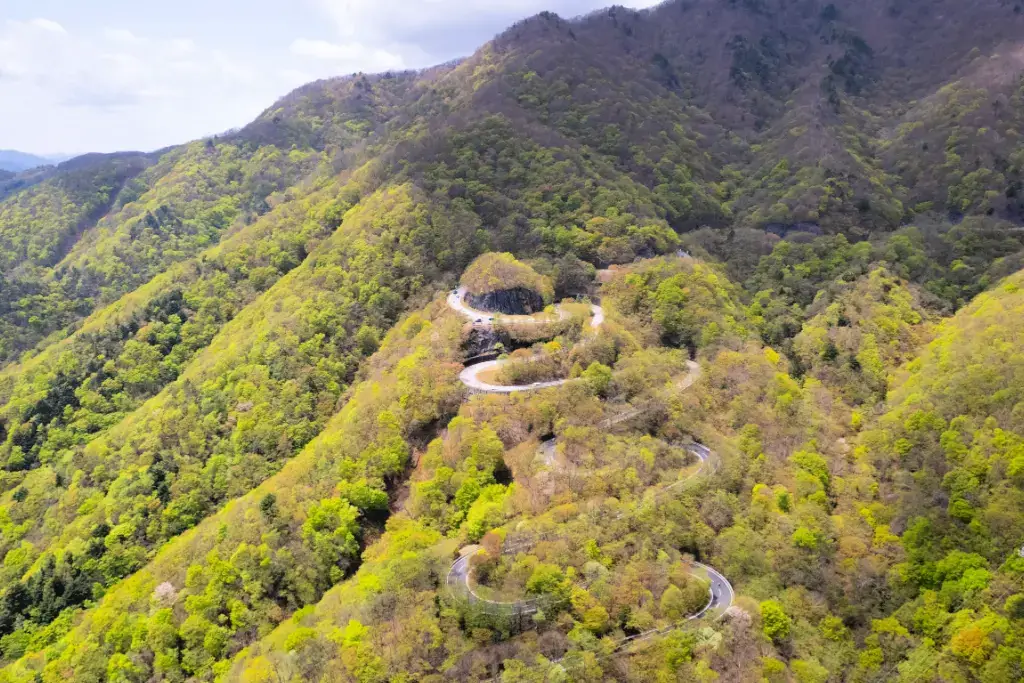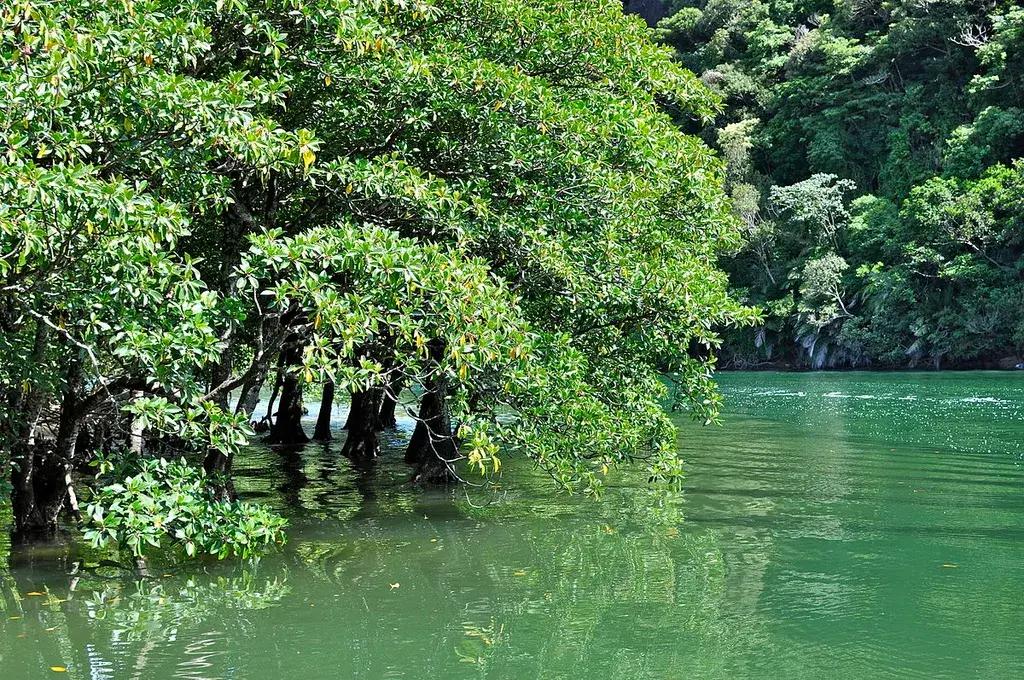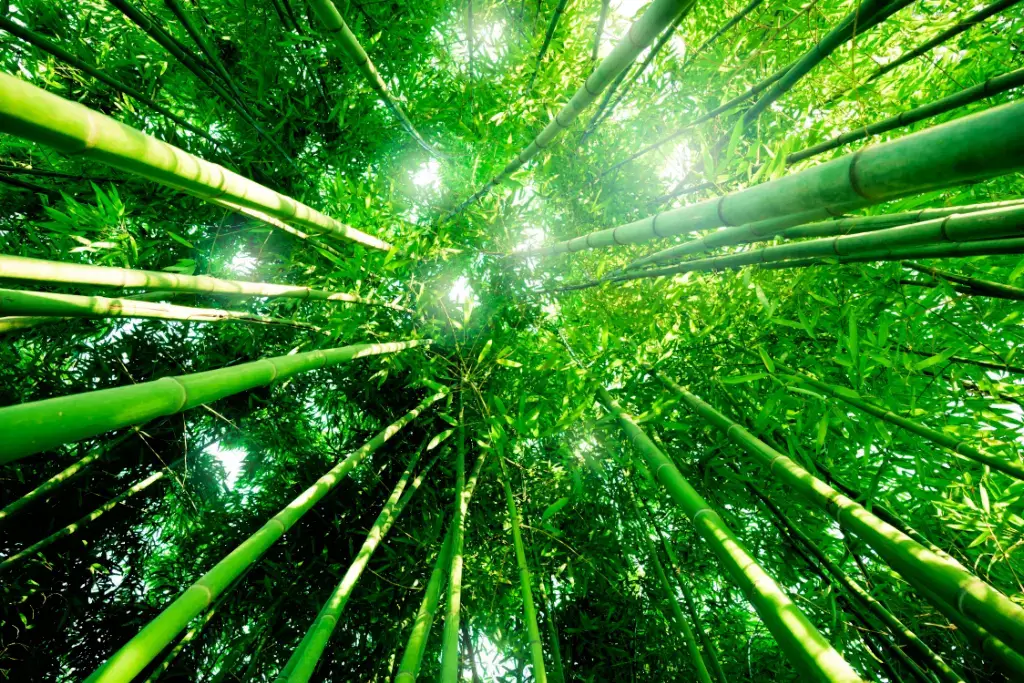beautiful forests
Beautiful Forests of Japan: Five Places to See!

Tokyo Terry
Posted on March 22, 2024
Share:

Despite being famous for large cities like Tokyo and Kyoto, more than half of Japan is covered by forests. These beautiful forests serve many different purposes. Most forests are in national parks; some are even World Heritage Sites! Others can be found in smaller parks and provide much-needed green spaces in cities nationwide. Japan’s forests also play a crucial role in preserving the country’s traditions and boosting the economy of rural areas. Here are five beautiful forests to visit in Japan this year!
Towada-Hachimantai National Park
Towada-Hachimantai National Park in northern Tohoku contains almost 900 square kilometers of wild, mountainous forest. It has over 40 volcanoes, earning it the nickname “Museum of Volcanoes.” However, the park is divided into two parts.
The Towada-Hakkoda region is in the north, on the border of Aomori and Akita Prefectures. The largest lake in Honshu, Lake Towada, can be found here. Water flows from this crater lake via Oirase-Keiryu, a mountain stream through the Oirase River valley. The stream is famous across Japan for its many waterfalls.

The Hachimantai region lies to the south, on the border of Akita and Iwate Prefectures. Here you will find Mt. Hachimantai, Mt. Akita-Komagatake, and Mt. Iwate. The deepest lake in Japan, Lake Tozawa, is also in this area. Matsukawa Gorge and its waterfall are a popular attraction in this part of the park.
A 50-kilometer-long (31-mile) hiking trail connects the two regions. And there are other routes to the lakes for boating during the summer. In fall, expansive views of the changing forest canopy can be had from the mountain summits. In winter, skiing is possible at the many resorts in the park.
Owakudani
Due to Mt. Hakone’s many eruptions, Owakudani Valley in Hakone, Kanagawa Phakonerefecture, was formed thousands of years ago. The complex volcano is responsible for the creation of Lake Ashi. Kintaroiwa Rock is also the result of one such eruption and is a piece of Mount Kamiyama. The entire area is still volcanically active, which makes it popular for visitors who want to explore its exciting landscape.

Owakudani Trail connects the Hakone Visitor Center near Lake Ashi to the Hakone Museum. Hikers on the trail can observe steam rising from cracks in the earth and scalding sulfuric pools. They can even try the famous Owakudani “black eggs”. These hot-spring eggs turn black after being boiled in the volcano’s water. Once you head home, you can go to Togendai Station via the Hakone Ropeway. The cable car has excellent views of Mt. Fuji and the surrounding mountainside.
Are you looking for artisanal snacks while checking out beautiful forests in Japan? Check out Sakuraco! Sakuraco delivers traditional Japanese snacks, teas, and sweets from local Japanese makers directly to your door.

Irohazaka Slopes
The Irohazaka Winding Road in Tochigi Prefecture is the most unique roadway in Japan. The 16-kilometer-long (10 miles) road starts in Nikko City and ends in Chuzenji City. It comprises two roads: one for going uphill and the other for downhill. The road gets its name from poetry that uses 48 old Hiragana characters, once per poem. Each of the 48 curves is marked with one of these hiragana.

Hundreds of years ago, the route was used by people visiting the Chuzenji Temple from Nikko. Even today, from October to November, the road is very popular with tourists. Hoto and Hannyano Falls are visible from the Akechidaira Observatory. And a cable car to the Akechidaira Lookout Point affords fantastic views of Nikko National Park below. In Chuzenji, there are observation points for Kego Falls.
Jidayubori Park
This is an urban park in Setagaya City, next to the Nogawa River. The park is small, but the trees are dense enough to hide the surrounding buildings from view completely. A quiet path along the river and two peaceful bamboo groves exist. Jidayubori is also popular because of its historical significance. Jidayubori Park’s Old Farm House Garden is a restored farming compound. The structures were built in the 19th century but have been restored to their original appearance.

The park differs from many other historical attractions because its displays are not behind glass. Visitors can enter the buildings, handle weathered tools, and use the fireplace. There are also hands-on workshops about traditional skills from the period, such as blacksmithing and weaving. The restored farm gives visitors a glimpse into daily life in the Edo and Meiji periods.
Irinomote Mangrove Park
Iriomote and Ishigaki are two tiny islands in Okinawa Prefecture, at the end of the Japanese archipelago. Together, they are called Iriomote-Ishigaki National Park, the southernmost national park in Japan. The park is about 1,200 square kilometers (463 square miles) and includes the islands and the coral reefs around and between them. The hirugi mangrove forests that grow along the coastlines are the largest in the country.

Because it is so far south, the islands have a subtropical climate and dense jungles. Some species of plants, like wild ginger and azaleas, can only be found in this park. Palm trees, orchids, and hibiscus are also native to the island. Wildlife includes endangered species like the Iriomote wildcat (yamaneko) and nesting sea turtles.
Ocean boat rides, waterfall hikes through tropical forests, and sea kayaking are possible all year round. The park’s blue coral also makes it a popular snorkeling and scuba diving destination. Especially “Manta Way,” the ocean between Iriomote and Kohoma islands, where large groups of fish gather in the warmer months. Iriomote-Ishigaki may be challenging, but it is a paradise that must be seen to be believed.
What makes these beautiful forests in Japan so special?
The forests of Japan are easily accessible. Japan’s network of trains and buses makes visiting most of the country’s parks convenient and easy. Even the most remote locations are within reach in a few hours with a plane ticket and rented car. Large areas of wilderness are not necessary to appreciate their usefulness. Many smaller forests in Japan also preserve Japan’s cultural heritage.

Whether you are seeking natural wonder, sporting activities, or a peaceful retreat, Japan’s forests are open throughout the year. And if time and money are an issue, local forests also contain surprises only a few minutes from a train station. Which part of these forests have you visited? Do you have any tips or experiences that you can share? Write them below!

Discover authentic flavors with Sakuraco
Get Sakuraco 

Discover authentic flavors with Sakuraco
Get Sakuraco 
Related Articles

Enoki is Just One of Many Japanese Mushrooms to Try!
Japan is blessed with various edible mushrooms. Let’s explore some popular ones in cooking, starting with enoki!

Mango and More: Delicacies from the Miyazaki Prefecture!
Each Miyazaki is worth eating in person, especially since you learn about the region’s rich culinary heritage. Let’s explore Miyazaki mango and other local dishes together.

Tiradito and More Japanese Fusion Cuisine Worldwide!
Japanese cooking methods and ingredients have created new dishes in many countries for several decades. Let’s learn more about Japanese cuisine worldwide, starting with tiradito!

Tonjiru and More Delicious Japanese Soups!
Whether it’s a simple home-cooked meal or a dish served on special occasions, Japanese soups always reflect the culture’s deep bond to nature and the changing seasons. Let’s explore some fantastic traditional Japanese soups, starting with tonjiru!


